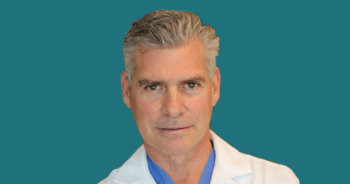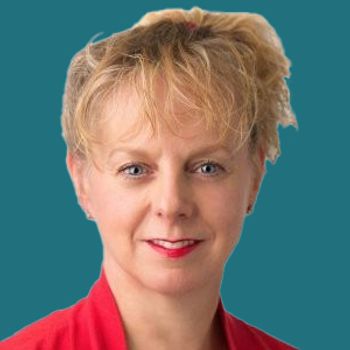
Cell Therapies Offer Hope But Are Often Misused
Cellular therapies have the potential to make a meaningful difference for patients with neurological disorders, if used correctly.
Wilson W. Bryan, MD
Cellular therapies have the potential to make a meaningful difference for patients with neurological disorders, if used correctly; however, at this time, the misuse of stem cells outside of FDA-approved pathways has overcrowded the marketplace with ineffective and often dangerous modalities, according to a plenary lecture by Wilson W. Bryan, MD, at the 2018 AANEM Annual Meeting.
"At the end of the day, what we need is rigorous, well-designed clinical trials that will find products that are effective, and if we find products that are effective, then we won't have doctors around the country making their own call. We will have something that we know works," said Bryan, director of the Office of Tissues and Advanced Therapies at the FDA's Center for Biologics Evaluation and Research. "Or, maybe we'll run clinical trials and we'll find these things won't work, and as the evidence accumulates the public and physicians may drift away from these products."
Case studies abound warning of the dangers of stem cell tourism, wherein individuals travel to China, Mexico, Argentina, or a Caribbean Island to receive treatment. However, contrary to the perception that these clinics exist only in other countries, Bryan noted that the highest concentration of stem cell clinics are actually located in the United States, primarily in Florida and California.
In August 2017, FDA Commissioner Scott Gottlieb, MD, released a statement noting that the FDA was taking steps to ensure proper oversight of stem cell and regenerative therapies. The FDA's regulatory efforts are initially targeting clinics with the most potential for adverse outcomes, such as blindness or tumors, Bryan said.
In many cases, adverse outcomes with stem cell therapy are brought about by non-homologous use of cells, Bryan noted, such as extracting stem cells from fat for injection into the eye or spinal cord. He noted that since fat stem cells are programmed to work in a predefined fashion it is unknown how they may behave in these environments.
"I think we have a bit of a mess," said Bryan. "We have stem cell clinics that are not proven for safety or efficacy, and the question is what are we going to do about it."
In May 2018, the FDA sough permanent injunctions against 2 Stem Cell Clinics that failed to take action following an initial August 2017 warning letter. The FDA noted that the first center, US Stem Cell Clinic, located in Florida, failed to meet good manufacturing standards, putting patients at risk for infection. This center was using stem cells from fat tissue for injection into the spinal cord for several conditions, including Parkinson disease and amyotrophic lateral sclerosis (ALS).
The second center, the California Stem Cell Treatment Center, was using a live vaccinia virus vaccine in the manufacture of a body fat stem cell product for patients with cancer. The center was also using another experimental procedures for patients with multiple sclerosis, ALS, Parkinson disease, and other disorders. As unapproved products, each of these procedures put patients at risk, the FDA said in its warning letter.
As an example of the dangers associated with unapproved stem cell products, Bryan cited a scenario wherein 3 patients received stem cell injections into both eyes for macular degeneration. In this example, all 3 patients had an adverse reaction to the cells resulting in blindness. Additionally, other examples have highlighted the potential for tumor growth following intrathecal injections to alleviate the symptoms of stroke.
In the macular degeneration example, Bryan warned that a similar procedure could be found on clinicaltrials.gov, suggesting legitimacy; however, he noted that not all trials located on the online database are approved by the FDA. To ensure safety, he suggested that patients should only enroll in trials that have been granted an investigational new drug (IND) application authorization. With the FDA's new oversight of these therapies announced in 2017, the agency provided a 3 year grace period to ensure all those conducting a trial have an IND.
The total number of IND submission for cellular therapies has increased substantially from 2009 to 2017; however, the number of applications for neurological disorders has remained relatively flat, Bryan noted. "Last year, in 2017, we had 4 INDs for cell therapies in neurologic conditions. That's not much. There's not that much going on," he said.
Despite these setbacks caused by misuse, cellular therapies still hold a great deal of potential, he noted. In cancer, the chimeric antigen receptor T-cell therapies have shown curative potential for children with leukemia. Moreover, early results with other cellular therapies targeting dystrophin are showing great potential in early studies.
Much as the FDA has begun to target unapproved stem cell clinics, Bryan called upon outside help from patient advocates, professional organizations, and scientists to stop the unapproved use of these therapies while placing emphasis on FDA-regulated clinical trials. In the future, he hoped to see a change in the number of INDs submitted for cell therapies.
"There's a lot of excitement about cell therapies, and there is a lot of research going on, but it is not nearly enough," Bryan said. "We at the FDA want to bring these cell therapies to market. There's a lot of excitement about cures, especially in the gene therapies, but we think cell therapies have a lot of potential as well. But we need to find something that is safe and effective."
Bryan WW. FDA Regulation of Cell Therapy. Presented at: 2018 AANEM Annual Meeting, National Harbor, MD, October 10-13, 2018.
Newsletter
Stay at the forefront of cutting-edge science with CGT—your direct line to expert insights, breakthrough data, and real-time coverage of the latest advancements in cell and gene therapy.












































